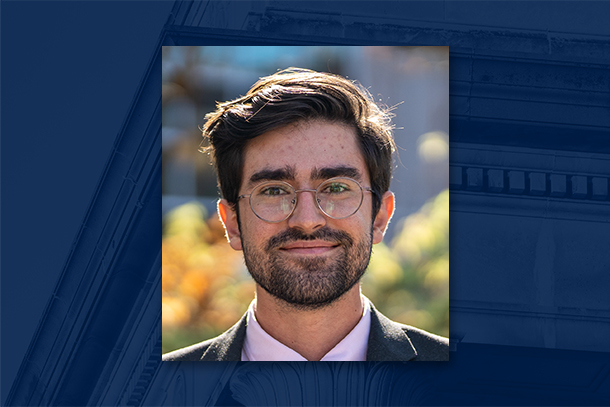
Kyle Dalton, a doctoral student of engineering at Penn State, was one of five winners selected in a student paper competition held by the Acoustical Society of America last May. Credit: Jeff Xu/Penn State. All Rights Reserved.
Graduate student wins Acoustical Society of America student paper competition
February 27, 2023
By Mary Fetzer
UNIVERSITY PARK, Pa. — Buried unexploded munitions can pose a threat to human health and the environment, according to the U.S. Army Corps of Engineer (USACE). The USACE identified more than 400 active or former military sites exceeding 10 million acres across the nation that are potentially contaminated with underwater unexploded ordnances (UXOs), dating from the 18th century to 2013, when the report was made. Kyle Dalton, a doctoral student of acoustics at Penn State, is working to make such UXOs, specifically those that are underwater, easier to find so they can be classified and remediated.
He proposed an algorithm to produce better sonar images of the UXOs that are under not just water, but also sediment. His paper won a 2022 Acoustical Society of America’s Proceedings of Meetings on Acoustics (POMA) student paper competition and was later published in the meeting’s proceedings.
“Active sonar is most effective for finding rigid materials,” Dalton said. “Underwater UXOs exhibit unusual elastic behaviors, and as a result, the images created by sonar are blurry and less effective. An image formation algorithm to reduce blurriness and capture a more-focused image is needed so the UXOs can be more easily detected. My model is the first step toward that goal.”
Dalton developed his model by combining two preexisting models. The first captures the behavior of an elastic cylinder to represent the UXO. The second is a sediment model to represent the sea floor.
“The UXOs are not rigid nor are they in a vacuum or free space,” he said. “My model takes into consideration both the elastic behaviors of the munitions as well as the nature of the sediment in which they may be buried.”
According to Dalton, using a model to test new sonar algorithms is a cost-effective, flexible and safe alternative to getting on a boat in the dangerous and logistically complicated realm of unexploded ordnances. Once a working algorithm has been created with the model, it can then be tested in the field.
After Dalton’s abstract of the model was accepted, he built the model and wrote his award-winning paper. He presented the paper at the Acoustical Society of America (ASA) conference in Denver last May and was featured in Across Acoustics, the official podcast of the ASA’s publication office.
Now, he is now focused on creating an algorithm that works on the model data and can eventually be applied to real data.
“Since writing the paper, I’ve come up with a focusing algorithm that seems promising and am applying it to experimental data,” Dalton said. “I will submit an abstract detailing the algorithm to ASA’s next meeting, which will take place in Chicago in May, and the accompanying POMA student paper competition as the next link in this chain.”



